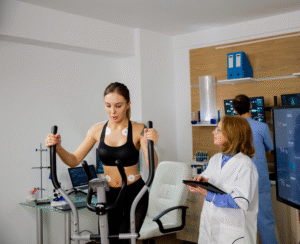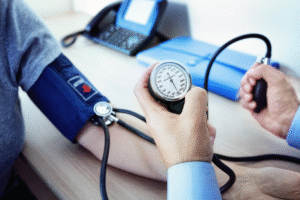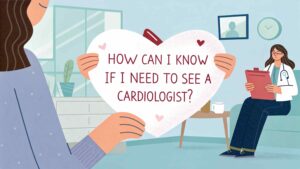An echocardiogram is a non-invasive test that uses ultrasound technology to create detailed images of the heart. Often recommended to evaluate heart function, detect abnormalities, or monitor existing conditions, this procedure provides fundamental insight into cardiovascular health. Here’s more information on what to expect during an echocardiogram:
Echocardiogram Basics
An echocardiogram uses high-frequency sound waves to create moving pictures of your heart. During this cardiac imaging procedure, a technician places a device called a transducer on your chest. This device sends sound waves through your skin to your heart, and the waves bounce back to create images on a computer screen.
The test shows your heart’s chambers, valves, and blood vessels in real-time. Cardiologists use these images to check how well your heart pumps blood and to look for problems with your heart’s structure. Echocardiography helps diagnose many heart conditions. These include heart valve problems, blood clots, holes between heart chambers, and issues with how your heart muscle moves.
Test Preparation
Most echocardiograms require little preparation. You can eat normally before the test and take your regular medications unless your doctor tells you otherwise. Wear comfortable clothing that allows easy access to your chest area, such as a shirt that opens in the front.
Remove jewelry from around your neck and chest area before arriving at your appointment. Avoid using lotions or powders on your chest on the day of your test, as these can interfere with the sound waves. If you’re having a stress echocardiogram, your doctor may give you specific instructions about eating and drinking before the test. Follow these guidelines carefully to get accurate results.
Procedure Steps
For the standard transthoracic echocardiogram, you will lie on an examination table, usually on your left side. A technician will place sticky patches called electrodes on your chest to monitor your heart rhythm during the test. The technician will apply a clear gel to your chest and then move the transducer over different areas to get pictures from various angles.
You may need to change positions or hold your breath briefly during certain parts of the test. The technician may also press firmly with the transducer to get clearer images. The procedure is painless, though you may feel slight pressure from the transducer.
You can usually return to normal activities immediately after the test. Some patients may need other types of echocardiograms, such as a transesophageal echocardiogram. The transesophageal echocardiogram involves placing the transducer down the throat for clearer images.
Results and Next Steps
Your test results will be reviewed by a cardiologist who will interpret the images and measurements. The specialist will examine how well your heart chambers are working, check your heart valves, and measure the thickness of your heart walls. Results are usually available within a few days of your test.
Your doctor will contact you to discuss the findings and explain what they mean for your health. If the echocardiogram shows any abnormalities, your cardiologist may recommend more tests or treatment options. Normal results mean your heart appears to be functioning well and has no structural problems. Abnormal results may indicate conditions such as heart valve disease, heart muscle problems, or fluid around the heart. These require further evaluation and treatment.
Schedule Your Echocardiogram Today
An echocardiogram is a valuable diagnostic tool that provides key information about your heart’s health. The test is safe, painless, and provides detailed images that help doctors make accurate diagnoses. If you need an echocardiogram or have concerns about your heart health, contact a cardiology specialist near you to schedule a consultation and determine if an echocardiogram is right for you.















